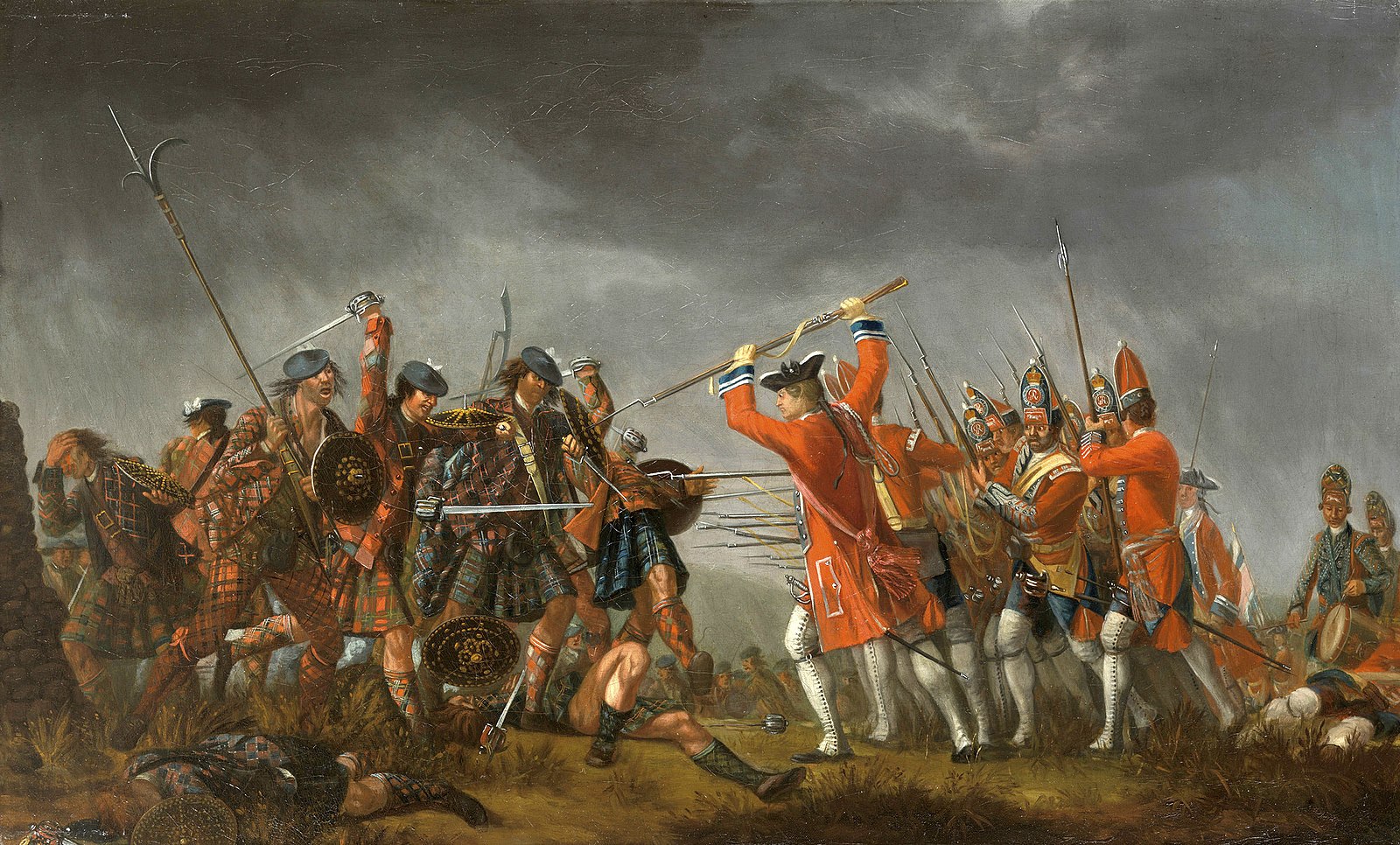The Battle of Culloden – 16th April 1746
Introduction
The Battle of Culloden took place on the 16th April 1746. It marks the day that the last full-scale battle took place on British soil. In this year 2021 it is also the 275th anniversary of this brutal battle. The Battle of Culloden has been commemorated annually, as well as misrepresented and mythologised depending upon who is recounting the details of this truly bloody battle.
Some say that it was a battle between the Scots and the English armies, others that it was a battle between the rabble Highlanders and the more refined Lowlanders. It is even suggested that it came about as a result of the Highland Clearances. None of these are correct. In fact, the seeds of discontent could be traced as far back as the death of King James VI of Scotland (James I of England).
Background
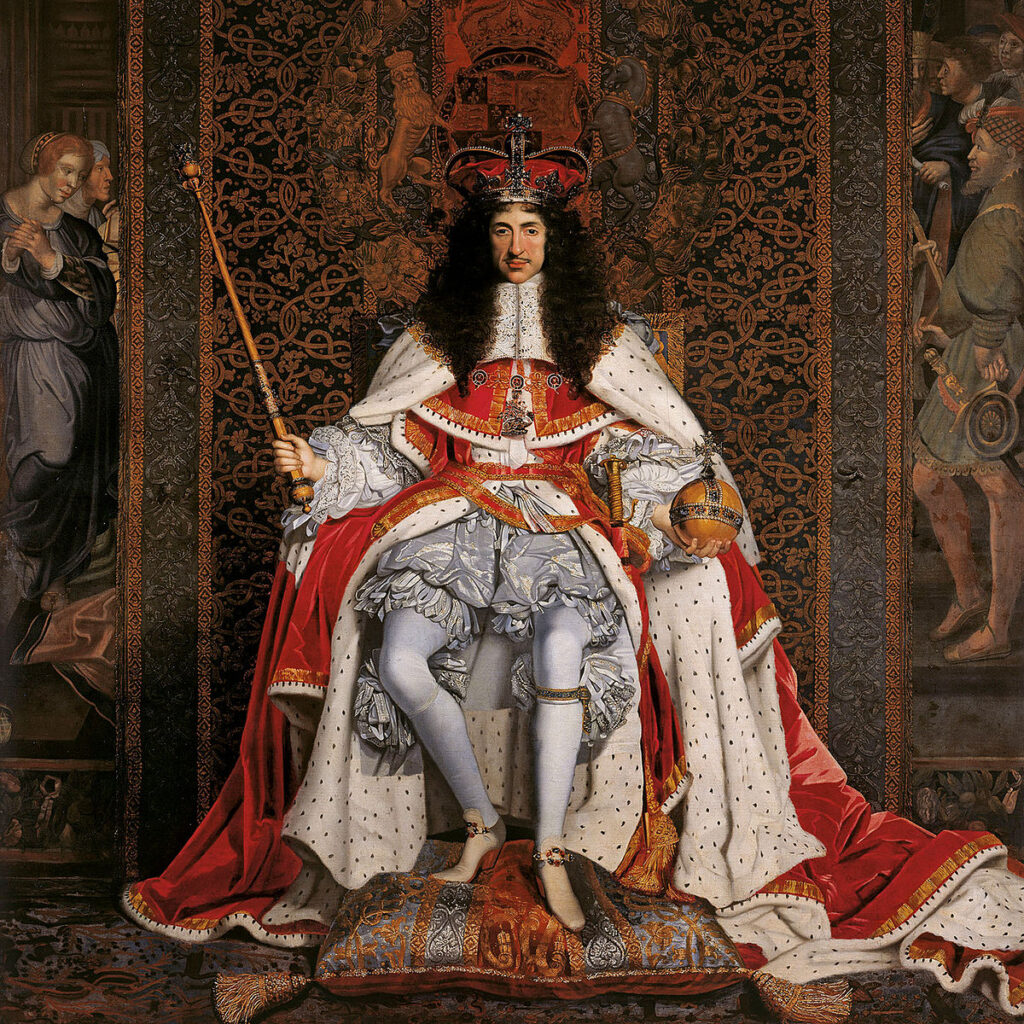
His son Charles I attempted to impose the rituals of the Church of England on the Scots resulting in the drawing up of the National Covenant. It also caused more division particularly amongst Highlanders who predominantly followed the proscribed Catholic faith. The following decades of strife and religious wars resulted in Charles I being executed and England becoming a republic led by Cromwell. The Scots, however, recognised his son as their King and he was crowned King Charles II. With the death of Cromwell Charles was restored to the English throne. Eventually his younger brother became King James VII (James II) on his death.
At this point it all started to unravel for James because of his Catholic beliefs. To further complicate matters when his Catholic wife gave birth to a son, there was consternation in the Parliament that the monarchy would thereafter be wholly Catholic. At the invitation of Parliament William of Orange and his wife Mary were invited to become King and Queen, thus exiling James. William and Mary were only able to become monarch by virtue of Mary being the daughter of James. The critical matter was that they were Protestant.
Although this was considered satisfactory in England, there was still huge support for the exiled James amongst both Protestants and Catholics. It was at this point that we see the rise of Jacobitism, supporters of James. The first Jacobite Rising took place in 1689 but after initial success they were finally subdued by government forces. There wouldn’t be another uprising by the Jacobites until 1715 and shortly after in 1719. Both of which were unsuccessful.
In the interim period there had been significant changes on the political front. Scotland had been forced into an Act of Union with England in 1707 which resulted in the Scottish Parliament being dissolved and a number of Scottish politicians sitting in Westminster. For many Scots this was seen as a sell-out by Scottish nobles and elite who had fallen on hard times because of a failed colonial adventure to colonise Panama.
Charles Edward Stuart – “Bonnie Prince Charlie”
With the failure of the 1715 and 1719 Jacobite Risings in support of James Francis Edward Stuart, son of the exiled King James VII, many would think that was the end of the rebellion. However, there was a young upstart who would prove that there was still some mileage in pushing forward with the Jacobite cause. This young man who was 20 years of age was none other than Charles Edward Stuart, otherwise known as Bonnie Prince Charlie. He had been brought up with the firm belief that both his father and grandfather were the rightful Kings of England and Scotland. By virtue of this fact, he believed it was his birth right to regain the throne for his father and ultimately for himself. And so, he set himself on the path to Culloden.

Although Charles who was based in Paris had sought the help of the French King Louis XV, none had been forthcoming. So, on a wing and a prayer and a belief that he had the support of the Highland clan chiefs, Charles set sail for Scotland where he planned to raise an army. He also wrote to the King to prove that he was serious about his rebellion but still seeking his support with manpower.
His Arrival in Scotland
When he landed in Scotland in July 1745, there was much scepticism amongst the Highland chiefs and not much of an appetite for conflict. This was further compounded when they learnt that the promised French troops had not transpired. But Charles with his consummate charm and diplomacy promised so much that he was able to persuade some of the Highland chiefs to support his cause.
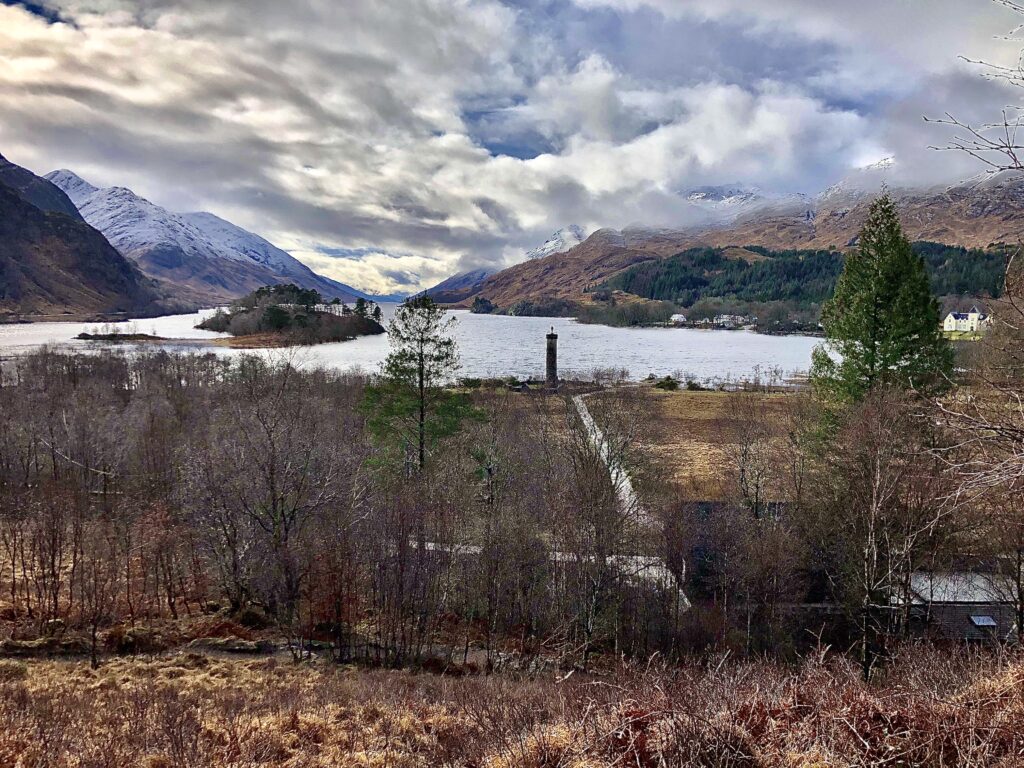

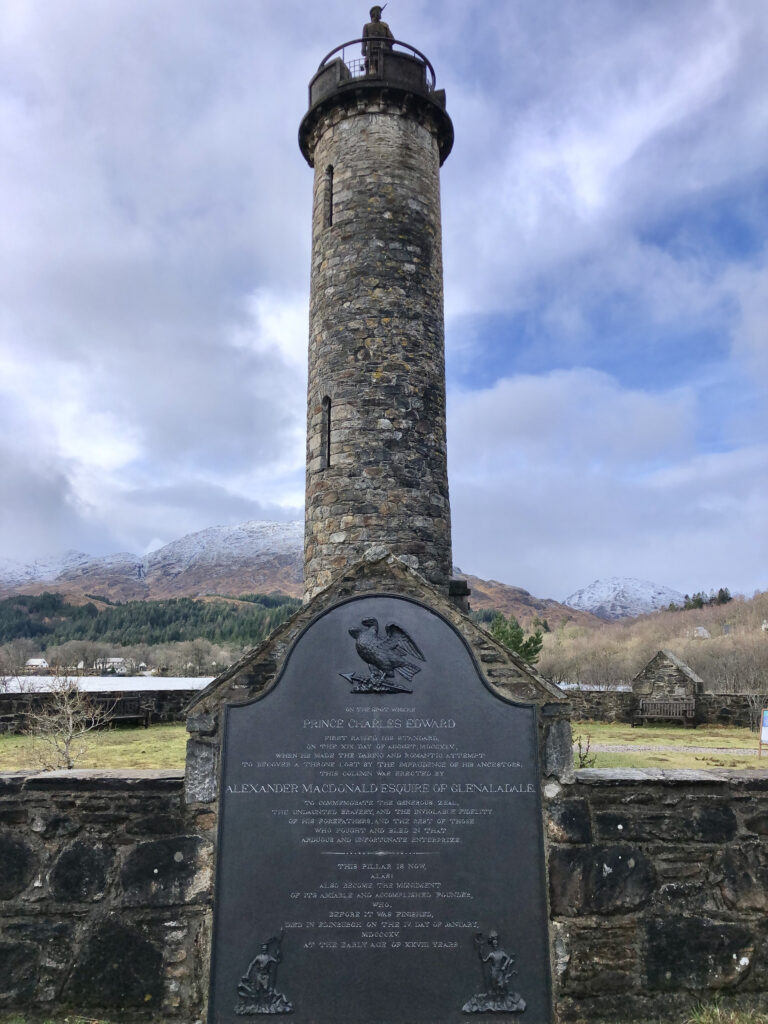
By September the Jacobite Army under the leadership of Charles and Lord George Murray, was making its way to Edinburgh. With little resistance they were able to take the city. Charles based himself at Holyrood Palace. The first battle to take place between the Jacobites and the government forces was at Prestonpans, just outside Edinburgh. With this success he was able to gain more supporters. More importantly, he was given a promise from France that he would be supplied with money, men and weapons.
The Highland chiefs were not entirely convinced. They were even less so when Charles laid out his plans to invade England. The chiefs were really only interested in returning Scotland to the status quo. That meant dissolving the Act of Union and reinstating the Scottish Parliament. But Charles had loftier plans. After much persuasion, the Jacobites did eventually make their way south in the belief that they would increase their numbers with Jacobite supporters south of the border. Sadly, this did not happen.
With every conflict that took place they suffered more casualties. But incredibly against all the odds, they made it as far as Derby, only a hundred miles from London. By this stage the government was in disarray. But the Scottish chiefs were not convinced by Charles’s promise of additional French troops arriving soon to bolster their forces. Furthermore, they believed that the government forces facing them were far larger than they actually were.
Retreat and Chaos
With the onset of winter and the lack of supplies and provisions, they finally persuaded Charles to return to Scotland. This would allow them the time to regroup, build their numbers and supplies.
It was a fatal error which would eventually lead them to their fate at the Battle of Culloden. By the end of December, the Jacobites had finally crossed back over the border into Scotland. Most would have expected this to mean that they were safe. However, the government forces were in hot pursuit.
By the time that some of the Jacobite army had reached Inverness, the government forces were already making their way from Aberdeen to Inverness under the command of the Duke of Cumberland. By the 15 April 1746, Cumberland’s troops were encamped at Nairn approximately 12 miles from Inverness. Because this was Cumberland’s birthday he had issued his troops with extra spirits rations. Charles thought that the troops would not be expecting an assault and would be the worse for wear. This would be the ideal opportunity to ambush them and so he persuaded his chiefs to march the twelve miles and attack before dawn. It was essential that they reached the camp by two in the morning. As it was, they were still four miles away and Lord George Murray called a halt. Instead, he turned his troops around to take them back to where they started on Drummossie Moor.
The Battle Commences
By this stage, the Jacobite army was exhausted and hungry and were ill-prepared for battle. The decision to do battle here was taken by Charles despite Murray’s advice that it would not be to the advantage of the Highlander form of attack. The ground was rough and not at all suitable for a Highland charge, particularly as they would be under artillery attack from government forces.
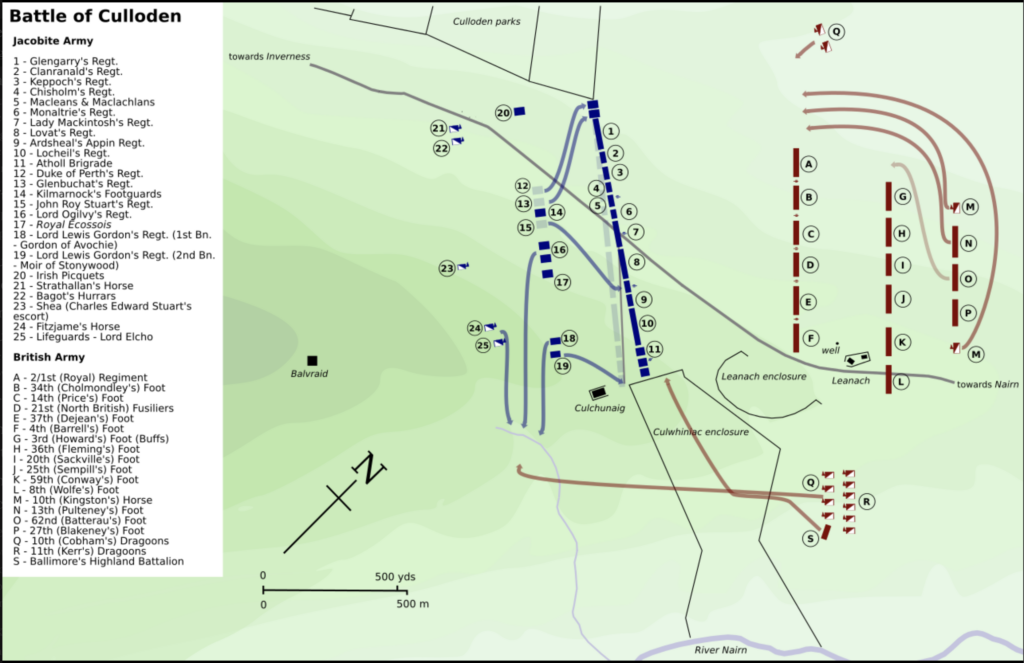
Despite little appetite for battle, the Highland chiefs led their clans on to the battlefield and lined up facing the government forces. It is estimated that there were approximately 7,500 government forces against 5,500 Jacobites. It is likely that there were even less Jacobites on the battlefield because of exhaustion from making their way back from Nairn.
At midday on the 16th April Charles ordered his artillery to open fire with little effect. The government forces having learnt their lesson from previous encounters with the Jacobites were far enough away that they suffered little to no casualties. Gradually, bit by bit, they moved forward with their front-line troops firing grapeshot from their muskets and their heavier artillery laying down fire. The result was devastation in the Jacobite ranks.
The Jacobites had no choice but to charge. However, the distance that they had to cover over the rough and boggy ground left them at a serious disadvantage. They were picked off by the government forces. Some of the Jacobites did in fact reach the government lines but outnumbered, outfought and outmanoeuvred the Jacobites suffered heavy casualties. Rank after rank of government forces laid into the Jacobite troops. In less than an hour the battle was over.
Although the clip below is taken from the Battle of Culloden sequence in Outlander, it really gives a feel for the brutality of battle.
On the battlefield alone, around 1,250 Jacobites were killed in contrast to only 50 government forces. It was truly a bloodbath. But it was what happened afterwards that shows the inhumanity of man. The Duke of Cumberland had ordered that no quarter was to be given. Any survivors on the battlefield were to be finished off. Those that had managed to escape were to be hunted down and executed. This policy of ‘extermination’ was extended into the Highlands and resulted in not just men but women and children being murdered. It is no surprise that Cumberland thereafter earned himself the nickname of “The Butcher” because of his actions at the Battle of Culloden.
The Aftermath
As a result of Culloden, many things changed in Scotland. For sure the Highlander way of life changed for ever. The clan chiefs who had fought against the government forces were either executed on the spot or taken to London for a show trial before being executed. Highland culture was outlawed. Tartan could not be worn and bagpipes were outlawed as an instrument of war. Highlanders forfeited their weapons. Jacobite estates were forfeited and Highlanders were evicted, many resorting to emigration to the New World or migrating to the cities to make a new life.
As for the Prince, he was to spend the next six months on the run. Eventually, he was rescued by a French expedition and returned to France. Although initially welcomed back to France as a hero, he was eventually expelled from France under the Treaty of Aix-la-Chapelle. During the remainder of his life, he spent most of his time drinking, until he suffered a stroke and died on 31 January 1788. His attempt to regain the throne for his father brought to an end, once and for all, the Stuart dynasty which had ruled over Scotland since 1406.
In Conclusion
It can truly be said that the Battle of Culloden was one of the darkest days in Scotland’s history. Many patriots died on this day and in the days, months and years after. As we look back, it was also an equally dark day for the government forces, including the Highland regiments that fought for them. The brutality, savagery and murder of so many prisoners and wounded will never be forgotten. Even some of the government forces were horrified by the actions of their comrades who, after all, were “only following orders” by the Duke of Cumberland.
Visiting the Battlefield
If you are planning to visit Scotland and you want to learn more about the Battle of Culloden, the National Trust for Scotland visitor centre at Culloden is arguably one of the best visitor centres in Britain. There is a superb exhibition inside with artefacts from the battle and a timeline of the preceding events leading up to it. There is surrounding audio video that puts you in the thick of the battle, allowing you to experience the horrors of battle. Then you can walk out on to the battlefield and physically see where the two sides formed up before launching into battle. There are marker stones that represent the various clans that participated in the battle.
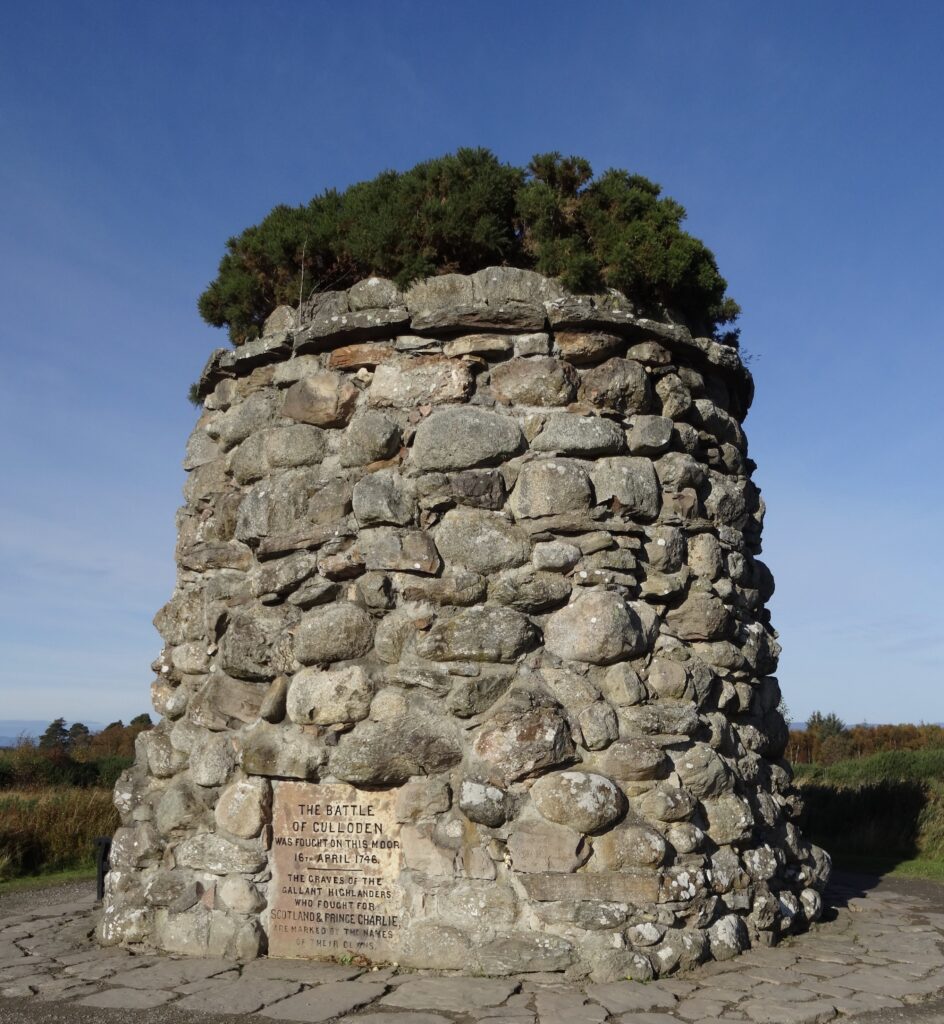


So, if you are heading anywhere near Inverness make sure to call in at Culloden. Edinburgh Cab Tours are able to include this in any itinerary for your private tour to the Highlands. Check our tours page for further details.

